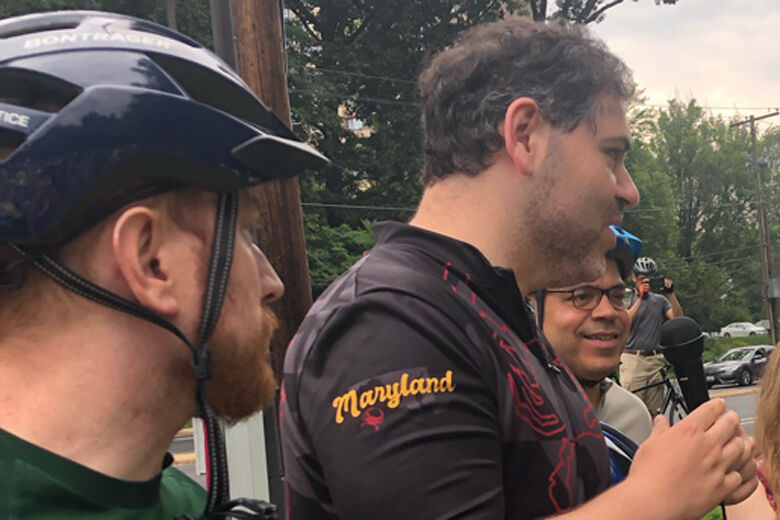
Bicyclists in Montgomery County, Maryland, are celebrating a first-of-its-kind project they say will keep them safer.
A ribbon cutting was held Saturday along the protected bike lane pilot project, which has changed the look of a portion of University Boulevard in the county.
The project puts the stretch of University Boulevard, between Arcola and Amherst avenues, on what is essentially a road diet.
“It went from three lanes on each side to two lanes on each side, with a curb lane and a protected bike lane,” said Peter Gray, with Open Streets Montgomery and on the board of directors for the Washington Area Bicyclists Association.
Separating the curb lane from the driving lanes are a line of flexible white pole dividers.
“It’s the first time anywhere in the state of Maryland that a curb lane, that was formerly used for cars, has been given over to use by bikes and scooters and the like,” said Gray. “In the past, you would see people riding bikes to get to the Wheaton Metro and they would be on the very narrow sidewalks with no buffer to the street.”
Now that it’s in place, the Maryland State Highway Administration will study the 1.35-mile stretch of road for four to six month to see how much it is used.
Cyclists had originally pushed for a much longer piece of road to be included in the project.
“Since it’s a short segment, it won’t have the impact we were initially hoping for, which would be to make it easier for people to bike from the east side of the county to Wheaton — but it will demonstrate people will use it,” Gray said.
“(The State Highway Administration) has said to us that if they think this is a success, they will pilot this in other road segments in the county.”
Gray said he is enthusiastic to see this step, which he believes will help fulfill Montgomery County’s Vision Zero Plan — a goal of eliminating serious and fatal collisions on county roads by the end of 2030.
According to Gray, 54% of the crashes that are seriously injuring or killing people occur on state roads. He said due to that, making protected areas on state roads is essential to reaching that goal.
“These are all avoidable deaths and making the infrastructure designed safer for everybody who uses it, I think we are all better off,” said Gray.








